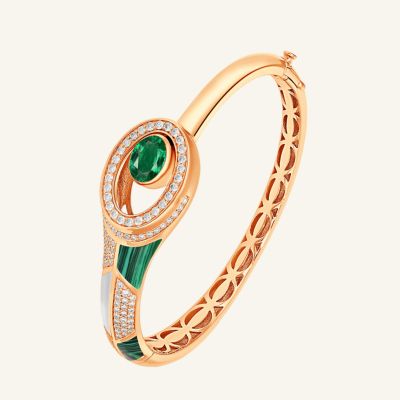Natural Blue Sapphire: A Comprehensive Guide to the Gem of Kings
Introduction Natural blue sapphires are among the most coveted and revered gemstones in the world. Known for their mesmerizing deep blue hues, symbolic meanings, and storied history, these gems have captivated royalty, collectors, and gem enthusiasts alike. This article delves into the origin, properties, significance, and care of natural blue sapphires, providing a thorough understanding of what makes this gemstone so unique and cherished.
1- Historical Background Sapphires have been admired and utilized by civilizations for thousands of years. The term "sapphire" is derived from the Latin word "sapphirus" and the Greek word "sappheiros," both of which refer to the color blue. Historically, blue sapphires were believed to protect wearers from envy and harm. Ancient Persians thought the earth rested on a giant sapphire, and its reflection colored the sky.
Throughout history, blue sapphires have symbolized nobility, truth, sincerity, and faithfulness. Royal families across Europe incorporated sapphires into their crown jewels and ceremonial regalia. The engagement ring of Princess Diana, now worn by Catherine, Princess of Wales, famously features a natural blue sapphire, boosting the gem's popularity in modern times.
2- Formation and Sources Natural blue sapphires are a variety of the mineral corundum, composed primarily of aluminum oxide (Al2O3). Trace amounts of elements such as iron and titanium contribute to the blue coloration. These gemstones form under high pressure and temperature conditions deep within the earth's crust and are typically found in metamorphic and igneous rocks.
The most renowned sources of high-quality blue sapphires include:
- Kashmir, India: Known for producing velvety, cornflower-blue sapphires that are extremely rare and valuable.
- Sri Lanka (Ceylon): Offers a wide range of blue sapphires, often lighter in color but exceptionally clear and lustrous.
- Myanmar (Burma): Known for deep royal blue sapphires.
- Madagascar: A newer source with significant deposits, producing a range of quality and colors.
- Thailand and Cambodia: Historically important producers.
3- Physical and Optical Properties Blue sapphires rank 9 on the Mohs scale of hardness, making them second only to diamonds in durability. This makes them ideal for everyday wear in rings, earrings, and other jewelry. They exhibit excellent brilliance and luster when properly cut.
Key optical properties include:
- Pleochroism: Sapphires show different colors when viewed from different angles, typically blue to violet-blue.
- Transparency: Most high-quality sapphires are transparent to translucent.
- Refractive Index: Typically between 1.76 and 1.77.
4- Grading and Valuation Blue sapphires are graded based on the "Four Cs": color, clarity, cut, and carat weight.
- Color: The most critical factor. The finest sapphires display a vivid, saturated blue with a medium to medium-dark tone.
- Clarity: Inclusions are common but should not be visible to the naked eye in high-quality stones.
- Cut: A well-executed cut enhances the stone's brilliance and color.
- Carat Weight: Larger stones are rarer and command higher prices.
5- Treatments and Enhancements Many sapphires undergo treatments to improve their appearance. Heat treatment is the most common and accepted practice, enhancing color and clarity without affecting durability. However, disclosure of any treatment is essential for ethical trading.
Other treatments include:
- Diffusion Treatment: Involves adding elements to the stone's surface at high temperatures.
- Fracture Filling: Filling surface-reaching fractures with glass or other substances to improve clarity.
6- Synthetic vs. Natural Sapphires Synthetic sapphires have the same chemical composition as natural ones but are created in laboratories. While they can be visually identical to natural sapphires, gemological testing can distinguish between the two. Synthetic sapphires are more affordable and widely available.
7- Symbolism and Cultural Significance In many cultures, blue sapphires are considered symbols of wisdom, virtue, and good fortune. They are associated with the heavens, often believed to bring spiritual insight and protection. In astrology, sapphires are linked to the planet Saturn and are worn to bring discipline and focus.
Religious and cultural texts often mention sapphires as sacred stones. In Christianity, they represent purity and divine favor. In Hinduism, they are considered powerful gems with transformative energies.
8- Care and Maintenance To maintain the beauty and longevity of blue sapphires, proper care is essential. These tips help ensure the gem remains vibrant:
- Cleaning: Use warm soapy water and a soft brush. Avoid harsh chemicals and ultrasonic cleaners.
- Storage: Store separately to avoid scratches from harder materials like diamonds.
- Regular Checks: Ensure settings are secure to prevent loss.
9- Investment and Collecting Due to their rarity and enduring appeal, natural blue sapphires are considered valuable investments. Factors such as origin, untreated status, and superior quality significantly increase a sapphire's value. Collectors often seek certified stones from prestigious mines like Kashmir or Ceylon.
Certification from reputable gemological laboratories can provide assurance regarding a sapphire's authenticity and treatment history. Consider referencing the following authoritative institutions:
- GIA - Gemological Institute of America
- IGI - International Gemological Institute
- SSEF - Swiss Gemmological Institute
10- Famous Blue Sapphires Several blue sapphires have gained fame due to their size, quality, and ownership:
- The Logan Sapphire: A 423-carat Sri Lankan sapphire, housed in the Smithsonian Institution.
- The Star of India: A 563-carat star sapphire displayed at the American Museum of Natural History.
- The Rockefeller Sapphire: A 62.02-carat stone once owned by John D. Rockefeller, renowned for its quality.
Conclusion Natural blue sapphires continue to fascinate and enchant with their rich history, remarkable beauty, and enduring value. Whether worn for their aesthetic appeal or symbolic significance, they remain a timeless choice in the world of fine gemstones. As collectors and enthusiasts seek authenticity and excellence, the allure of the blue sapphire endures across generations.
This comprehensive exploration underscores why the natural blue sapphire is not merely a gemstone but a treasured piece of the earth's heritage and human culture.
Explore the Sapphires Collection Now
Step into a world where gold glows brighter, diamonds sparkle deeper, and rubies burn with passionate red. Let your story shine—elevated by materials that are eternal.
























































